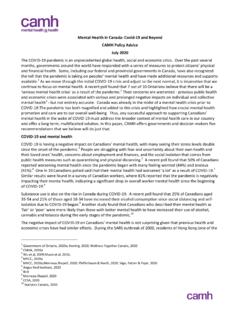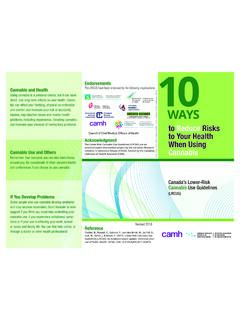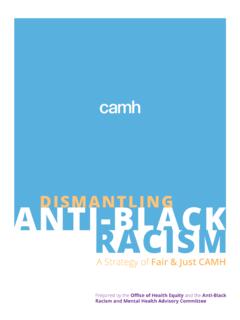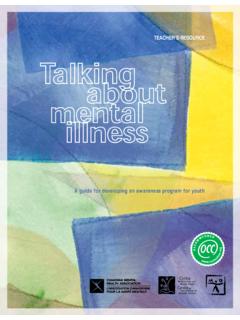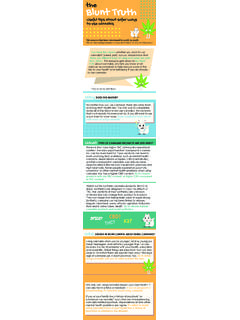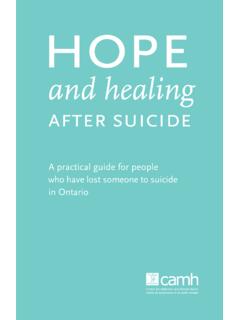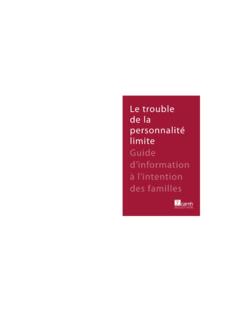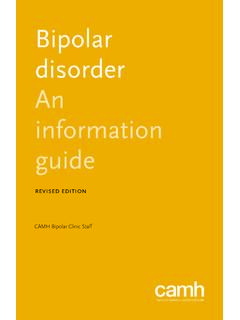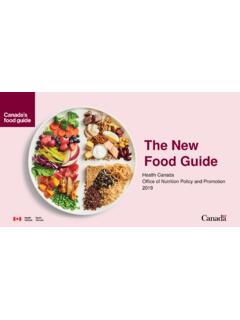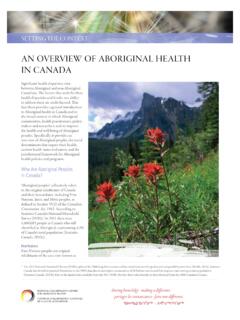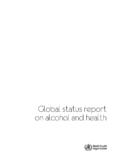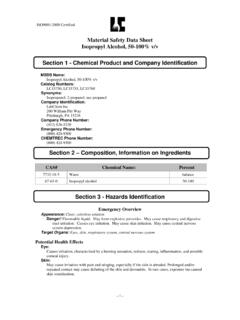Transcription of guidelines, “a drink” Beer Wine Distilled Alcohol means
1 WHEN ZERO S THE LIMITDo not drink when you are: driving a vehicle or using machinery and tools Taking medicine or other drugs that interact with Alcohol Doing any kind of dangerous physical activity Living with mental or physical health problems Living with Alcohol dependence Pregnant or planning to be pregnant Responsible for the safety of others Making important decisionsPREGNANT? ZERO IS SAFESTIf you are pregnant or planning to become pregnant, or about to breastfeed, the safest choice is to drink no Alcohol at YOUR DRINKINGA lcohol can harm the way the body and brain develop. Teens should speak with their parents about drinking . If they choose to drink, they should do so under parental guidance; never more than 1 2 drinks at a time, and never more than 1 2 times per week. They should plan ahead, follow local Alcohol laws and consider the Safer drinking tips listed in this in their late teens to age 24 years should never exceed the daily and weekly limits outlined in Your drinking helps to promote a culture of drinking supports healthy LIMITSR educe your long-term health risks bydrinking no more than: 10 drinks a week for women, with no more than 2 drinks a day most days 15 drinks a week for men, with no more than 3 drinks a day most daysPlan non- drinking days every week to avoid developing a OCCASIONSR educe your risk of injury and harm bydrinking no more than 3 drinks (for women)or 4 drinks (for men) on any single to drink in a safe environment.
2 Staywithin the weekly limits outlined abovein Your 341 ml (12 oz.) 5% Alcohol contentWine 142 ml (5 oz.) 12% Alcohol contentCider/ Cooler 341 ml (12 oz.) 5% Alcohol contentDistilled Alcohol (rye, gin, rum, etc.)43 ml ( oz.) 40% Alcohol contentFor these guidelines , a drink means :SAFER drinking TIPS Set limits for yourself and stick to them Drink slowly. Have no more than 2 drinks in any 3 hours. For every drink of Alcohol , have one non-alcoholic drink. Eat before and while you are drinking Always consider your age, body weight and health problems that might suggest lower limits. While drinking may provide health benefits for certain groups of people, do not start to drink or increase your drinking for health drinking helps to promote a culture of moderation. Low-risk drinking supports healthy lifestyles.
3 500 75 Albert Street, Ottawa, ON K1P 5E7 Tel: 613-235-4048 | Fax: 613-235-8101 Charitable #: 122328750RR0001 Developed on behalf of the National Alcohol Strategy Advisory Committee Canadian Centre on Substance Use and Addiction 2018 Cette publication est galement disponible en fran Canadian Centre on Substance Abuse changes lives by bringing people and knowledge together to reduce the harm of Alcohol and other drugs on society. We partner with public, private and non-governmental organizations to improve the health and safety of is a personal choice. If you choose to drink, these guidelines can help you decide when, where, why and how. Visit our website to find out more! : Butt, P., Beirness, D., Gliksman, L., Paradis, C., & Stockwell, T.
4 (2011). Alcohol and health in canada : A summary of evidence and guidelines for low-risk drinking . Ottawa, Ont.: Canadian Centre on Substance s LOW-RISK Alcohol drinking GUIDELINESCCSA wishes to thank the partners whosupported development of canada sLow-Risk Alcohol drinking a complete list of the organizationssupporting the guidelines , please
